
by Larry Williams | Feb 26, 2019
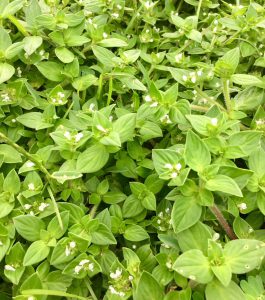
Florida pusley is common summer annual weed. Photo credit: Larry Williams
If weeds were a problem in your lawn last summer, the coming weeks are the time to apply a pre-emergence herbicide to prevent their emergence again this spring and summer.
Timing of a pre-emergence herbicide application for summer annual weeds such as crabgrass should be during February when day temperatures reach 65° to 70°F for four to five consecutive days. This generally coincides with when azaleas and dogwoods first begin to bloom. This in not when these plants are in full bloom but when the first flowers begin to open along the lower branches, particularly on azaleas. Note: This timing is not true for chamberbitter. Chamberbitter requires warmer soil temperatures to germinate. Apply a pre-emergence herbicide during April when battling chamberbitter.
Most pre-emergent type herbicides won’t work when applied after weeds are visible. The product must be applied just before seedlings emerge.
The weeds growing now in local lawns are not summer annuals. Summer annual weed seeds are still dormant awaiting warmer spring temperatures to germinate and emerge.
Most of the weeds in yards now are winter annuals. A few include annual bluegrass, chickweed, henbit, hop clover, lawn burweed and wild geranium.

Winter annual weeds in lawn. Photo credit: Larry Williams
A pre-emergence herbicide should have been applied during October to help prevent these weeds.
A few common summer annual weeds include crabgrass, Florida pusley, chamberbitter, sandspur, spotted spurge and doveweed.
If your lawn has a history of summer annual weeds, one control option is to apply a pre-emergence herbicide. Timing is critical in order for pre-emergence herbicides to work.
Look for lawn pre-emergence products that contain the active ingredients oryzalin, benefin, pendimethalin, DCPA or bensulide.
For season-long weed control, a second application may be needed about six to nine weeks after the initial application. To activate some products, irrigation or rain may be necessary following application. Because pre-emergence products may interfere with lawn grass seed germination, delay re-seeding six to sixteen weeks after application.
Overuse of some types of pre-emergence herbicides can cause a lawn to produce short stubby weak roots. So only apply the product if there is a pest to control – in this case, if you have had a history of summer annual weeds. Otherwise, save your money and time. Use pre-emergence herbicides only on lawns that have been established for at least a year. These products can severely injure newly planted lawns.
It is the user’s responsibility to read and follow all label directions and precautions when using any pesticide, including herbicides.
by Ray Bodrey | Jun 7, 2018
Camellias are a Panhandle favorite, as the flowers can highlight a landscape with bright, vibrant colors in fall and winter. However, spring time can bring about these colors in a negative way, in the form of leaf gall.
The camellia is native to Asia and brought to America in the late 1700’s. These plants have proven to be a dependable addition to the southern landscape with minimal care. When camellias are correctly planted and cared for, minimal disease problems arise. However, camellias can contract leaf spot, dieback, root rot and bud and leaf gall.

Camellia Gall Credit: Patty Dunlap, Gulf County Master Gardener.
Leaf and bud galls are caused by the fungus Exobasidium vaccinia. The gall appears as thickened, waxy and enlarged leaves or buds during the cool spring months. One or several leaves on a single shoot may be affected. Once you’ve found infected leaves, no chemical control will be effective. Actually, no fungicide has been found very effective in combatting this condition. However, control can be accomplished in the home garden by simply pinching off and destroying infected leaves. Disease activity usually stops with warmer weather. A best management practice to curb infection is to reduce overhead watering during cool, wet weather periods of spring. Great news, this condition does not cause any long-term issues with the plant.
For more information regarding fungal issues in landscape plants, contact your local county extension office.
Fun camellia fact: The young leaves of the species, Camellia sinensis, are processed for tea, one of the world’s most popular drinks. Please see UF/IFAS EDIS publication, “Tea Growing in the Florida Landscape” by Jonathan H. Crane and Carlos F. Balerdi: http://edis.ifas.ufl.edu/pdffiles/HS/HS30800.pdf
Supporting information for this article can be found in the UF/IFAS EDIS publication, “Camellias at a Glance” by Sydney Park Brown: http://edis.ifas.ufl.edu/pdffiles/EP/EP00200.pdf
UF/IFAS Extension is an Equal Opportunity Institution.
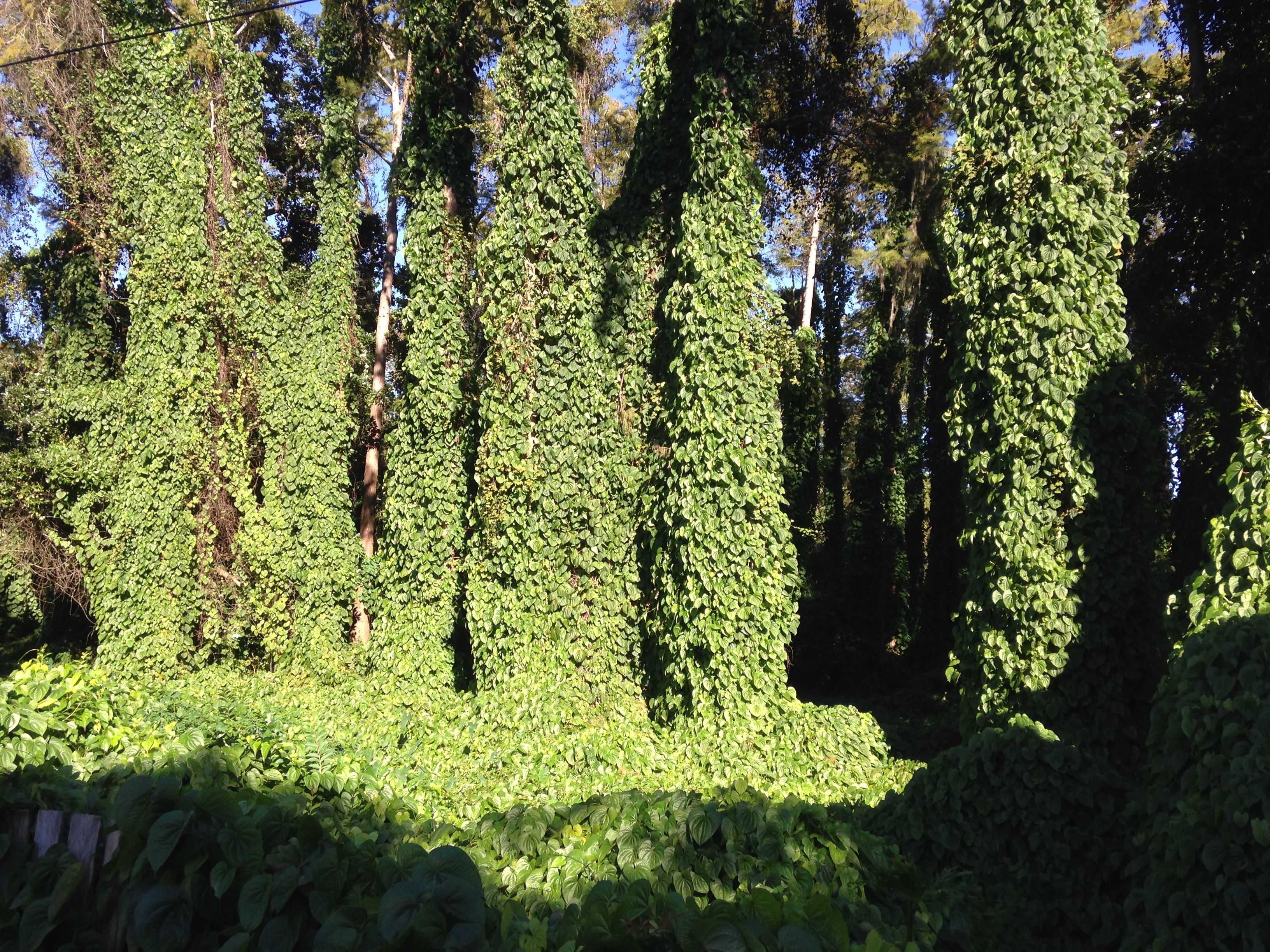
by Julie McConnell | May 23, 2018
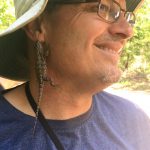
Dr. Steve Johnson, UF/IFAS Associate Professor of Wildlife Ecology will be the featured speaker on June 6th
June 6th is a great day to learn about all types of invasive species that threaten natural areas in Northwest Florida!
The UF/IFAS Extension Bay County office will have multiple educational exhibits with living samples of species of concern from 9 a.m. – 5 p.m. on Wednesday, June 6th. This is a multi-agency effort to inform citizens about the impact of invasive plants and animals and how they can help reduce introduction and spread. For full details see the Bay_Invasive Workshop Flyer
We are pleased to announce our partners Florida Fish and Wildlife Conservation Commission (FWC) and Science and Discovery Center of Northwest Florida will be on hand to share information about caring for exotic pets and current management plans for invasive species such as Lionfish, Aquatic Weeds, and how to surrender an animal on designated Pet Amnesty Days.
At noon there will be a special guest speaker for a bring your own lunch & learn “Exotic Invaders: Reptiles and Amphibians of Concern in NW FL.” Dr. Steven Johnson, UF/IFAS Associate Professor of Wildlife Ecology, will talk about exotic reptiles and amphibians we should be aware of that may occur in our area.
In the morning, we will be focusing on the invasive air potato vine with the distribution of air potato leaf beetles for biological control. Need air potato leaf beetles to manage the air potato vine on your property? Please register here http://bit.ly/bayairpotato to receive beetles – they will be distributed from 9 a.m. – noon on June 6th.
Learn more about the success of the Air Potato Biological Control program at http://bcrcl.ifas.ufl.edu/airpotatobiologicalcontrol.shtml
#invasivespecies
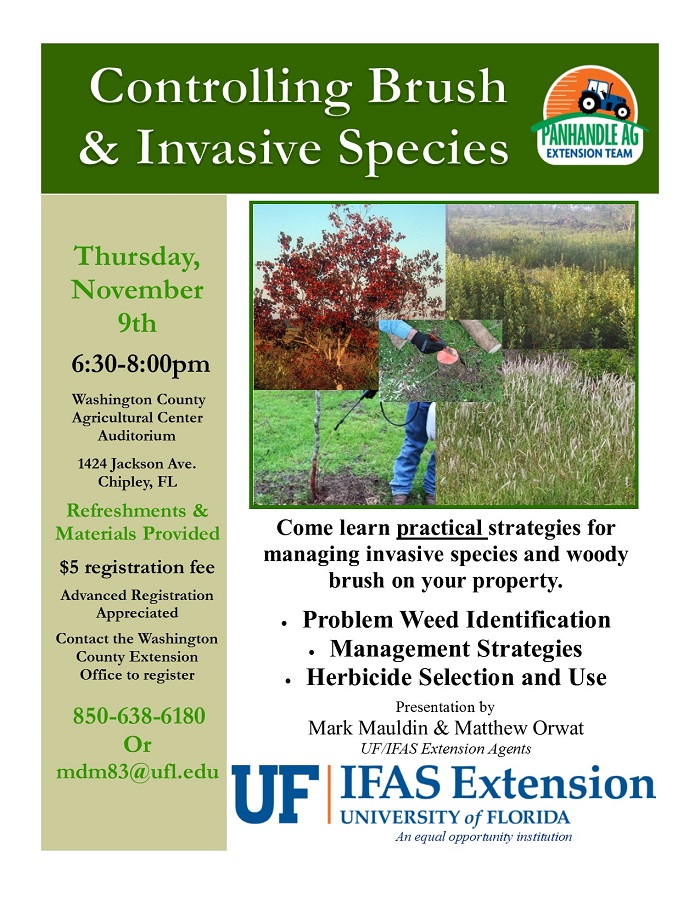
by Matthew Orwat | Oct 26, 2017
Encroaching brush, whether native or invasive, can be a problem for properties large and small. Fighting woody brush and other hard-to-kill weed species can be challenging for property owners. Many factors affect the effectiveness and efficiency of control efforts.
Timing of the application is a key factor that many property owners fail to consider. The cooler, fall and winter months are an excellent time to control a wide variety of troublesome brush species. With this in mind, the Washington County Extension Agents will be presenting a class, Controlling Brush & Invasive Species on November 9, 2017. The class will focus on plant identification and specific chemical control strategies that are effective in the fall and winter months. Herbicide selection and application techniques will be addressed in detail.
Controlling Brush & Invasive Species will be held at the Washington County Agricultural Center (1424 Jackson Ave., Chipley, FL) on Thursday, November 9, 2017 at 6:30 in the evening. Refreshments and printed reference materials will provided. There is a $5 registration fee for the class, payable at the door. Advanced registration for the class is appreciated. If you have questions or would like to register please contact Mark Mauldin at the Washington County Extension Office (850-638-6180 or mdm83@ufl.edu).

by Larry Williams | May 11, 2017
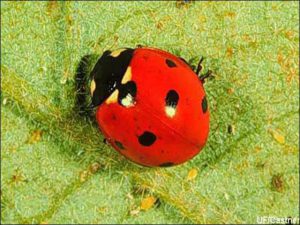
Adult Ladybug. Photo Credit: James Castner University of Florida
A number of summers ago, I noticed whiteflies on a confederate rose plant in my landscape. I considered using an insecticide to control the whiteflies but decided against doing so after taking a closer look. What I found was a population of ladybugs – eggs, larvae, pupae and adults.
Ladybug adults and larvae eat whiteflies, as well as other soft-bodied insects such as aphids. So, I waited to see what would happen.
At first I was seeing mostly adult whiteflies, which look like tiny white moths. Adult whiteflies mate and then lay eggs on the underside of leaves. The eggs hatch into flat translucent scale-like nymphs that suck the “juice” from the underside of the leaves.
Eventually, some of the leaves developed a black coating called sooty mold. As certain insects (primarily aphids, some scales and whiteflies) feed, they excrete plant sap that coats the leaves. Sooty mold then grows on this sugary sap. It’s not a pathogen. It just makes the leaves look ugly.
Knowing that the whiteflies would not kill the confederate rose, I was willing to tolerate the sooty mold and allow the ladybug population to build.
Allowing whiteflies to live on your plants may not always be the best option. But in order to have beneficial insects in your landscape, there must be some “bad” insects for them to eat.
Insects such as ladybugs, lacewings and praying mantises eat many pest insects. Encouraging these beneficial insects can allow you to reduce the amount of pesticides applied.
It’s important to learn to recognize the adult and immature stages of these beneficial insects. Ladybugs have larvae that look nothing like
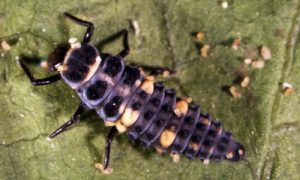
Ladybug larva. Photo credit: Aristizabal University of Florida
the adults. Some ladybug larvae look like small orange and black alligators. Others may resemble mealybugs. Many gardeners that would never kill adult ladybugs mistake their larvae as pests and kill them with insecticides.
The following UF/IFAS Extension website will help you learn to recognize many of our beneficial insects. http://edis.ifas.ufl.edu/topic_beneficial_insects
Once you find beneficial insects in your landscape, reduce or eliminate the use of insecticides. When an insecticide is needed, use environmentally friendly options such as insecticidal soaps, horticultural oils and products that contain Bacillus thuringiensis (Bt).
Sometimes a heavy stream of water from a water hose is all that is needed to remove pest insects from plants and reduce their numbers to an acceptable population.
Remember, leaving a few pest insects is a great way to attract beneficial insects. Tolerating a minor infestation and a little plant damage will benefit the helpful insects, your pocketbook and the environment.
by Julie McConnell | May 1, 2017
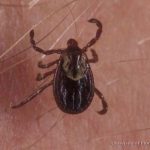
American Dog Tick. Photo: L. Buss, UF/IFAS
You’ve probably heard some tips to prevent picking up ticks in the past, but did you ever wonder why some work and others don’t? Understanding the life cycle and behavior of common ticks can help you succeed with your prevention measures.

Life Cycle of American Dog Tick. Credit: Centers for Disease Control
A general life cycle for ticks includes four life stages: egg, larva, nymph, and adult. The egg hatches into larva which require a blood meal to molt into a nymph which again requires a blood meal before molting to an adult.
The adult female also requires blood feeding in order to produce eggs, which she lays in high numbers – some species lay up to 6,500 eggs!
Because blood is required for development, ticks have to be resourceful in finding hosts. Knowing this can help you understand why some tips work better than others.
Tick Tips
-
Wear clothing that covers skin and avoid sitting on the ground or logs in brushy areas. Adult ticks exhibit a behavior called “questing” where they climb to the top of grasses and vegetation with their forelegs extended and wait for a host to come by. The American Dog Tick‘s primary host are dogs, but they will also target cattle, horses, and humans.
-
Apply repellents to exposed skin and clothing (different products are labeled for where they are applied, follow all directions). These chemicals repel ticks and can reduce likelihood of tick attachment, but ticks have been known to crawl over treated areas to access untreated body parts.
-
Keep grass and vegetation maintained and clean up debris that may harbor small mammals and rodents. Early in the tick life cycle it targets smaller animals for blood and they can
hide or shelter in debris piles and vegetation.
-
Always shower and check yourself for ticks after being in areas where ticks may live, especially when temperatures are warm. Nymphs can be less than 1 mm long, so check carefully!
For instructions on how to properly remove a tick that has embedded, visit UF Health Tick Removal.
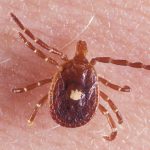
Female Lone Star tick that has not fed. Photo: L. Buss, UF/IFAS
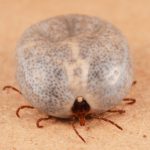
Lone Star Tick female engorged on blood. Photo: L. Buss, UF/IFAS













